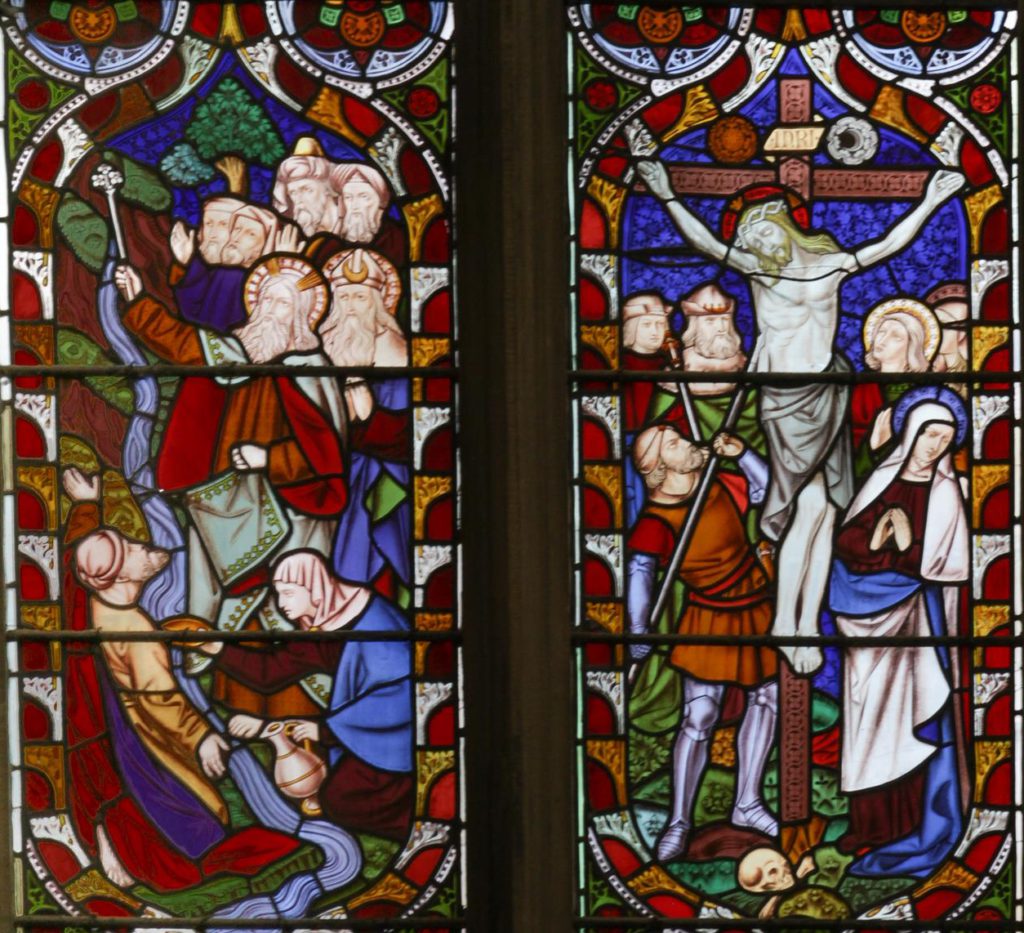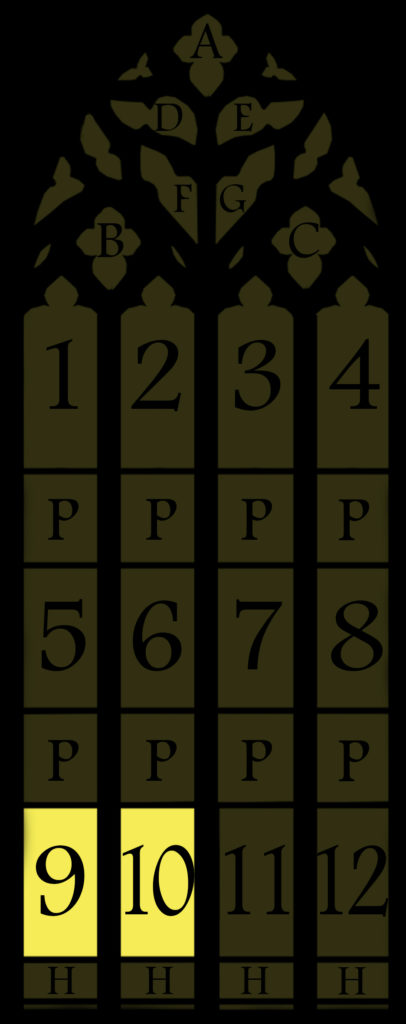The West Window’s Message

Bread, wine and water are the stuff of physical and spiritual life for Christians and all are represented in St Marie’s Great West Window, above the main entrance to the Cathedral.
The Window was given to the Cathedral by Lady Augusta Mary Catherine Minna, the mother of the 15th Duke of Norfolk and Countess of Arundel and Surrey, whose gift is commemorated at the bottom of the window.
It was designed by the renowned English architect, designer, artist and critic Augustus Welby Pugin and made by Hardman & Co, one of the world’s leading manufacturers of stained glass and ecclesiastical fittings in the mid-1800s.
St Marie’s West Window is what is known as a ‘Typological Window’ because it links events from the Bible’s Old Testament with events during the life of Jesus Christ, recorded in the New Testament.
Two panels to the left of the second row from the top of the main part of the window explore the concept of priesthood and the offering to God or sacrifice of bread and wine in thanksgiving.
The Sacrifice of Bread and Wine


The scene on the left focuses on an encounter in Genesis between the father of the Jewish and Christian faiths, Abraham and the enigmatic Old Testament character, Melchizedek, who is seen as a model for Christ.
Melchizedek’s bringing of bread and wine and blessing of Abram is seen as pre-figuring Christ’s blessing of bread and wine at the Last Supper to institute the Christian Eucharist, a Greek word meaning ‘Thanksgiving’, which is shown in the sister panel.
As Matthew describes it in his Gospel: While they were eating, Jesus took a loaf of bread, and after blessing it he broke it, gave it to the disciples, and said, ‘Take, eat; this is my body.’
Then he took a cup, and after giving thanks he gave it to them, saying, ‘Drink from it, all of you; for this is my blood of the covenant, which is poured out for many for the forgiveness of sins.
Look closely at the Last Supper panel and you will see only ten of the 12 disciples are shown in the window.
Immediately below these two panels are two panels emphasising the importance of water for physical and spiritual life.
Blood and Water Linking the Sacraments


The panel on the left illustrates a story from the Old Testament Book of Exodus.
After escaping slavery in Egypt, the Israelites wandered in the desert for many years. During their wanderings, they complained to Moses that they and their livestock were dying of thirst.
God told Moses to strike a rock with his staff and, when he did, water flowed out of it, allowing the Israelites to drink their fill.
The panel to the right, meanwhile, shows a soldier piercing Jesus’ side with a spear, to show he is, indeed dead, causing water and blood to flow out.

Blood and water provide a direct link to two Sacraments – the Eucharist and Baptism.
St Paul provides a further link illustrated in these panels in his First Letter to the Corinthians when he writes: “They all ate the same spiritual food and all drank the same spiritual drink. For they drank from the spiritual rock that followed them, and the rock was Christ.”
Last of all, look at the apex of the window.
At the bottom, on the left, you will find a personification of Peace, crowned and carrying the bread and wine of the Eucharist.

